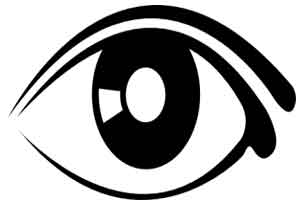- Home
- Editorial
- News
- Practice Guidelines
- Anesthesiology Guidelines
- Cancer Guidelines
- Cardiac Sciences Guidelines
- Critical Care Guidelines
- Dentistry Guidelines
- Dermatology Guidelines
- Diabetes and Endo Guidelines
- Diagnostics Guidelines
- ENT Guidelines
- Featured Practice Guidelines
- Gastroenterology Guidelines
- Geriatrics Guidelines
- Medicine Guidelines
- Nephrology Guidelines
- Neurosciences Guidelines
- Obs and Gynae Guidelines
- Ophthalmology Guidelines
- Orthopaedics Guidelines
- Paediatrics Guidelines
- Psychiatry Guidelines
- Pulmonology Guidelines
- Radiology Guidelines
- Surgery Guidelines
- Urology Guidelines
Optics breakthrough for better night vision

SYDNEY: A team of Australian researchers has demonstrated an optics breakthrough that can revamp night vision by making infra-red technology easy-to-use and cheap.
The team reported a dramatic increase in the absorption efficiency of light in a layer of semiconductor that is only a few hundred atoms thick -- to almost 99 percent light absorption from the current inefficient 7.7 percent.
This can save millions of dollars in defence and other areas using sensing devices, and boost applications of technology to a host of new areas such as agriculture.
Infra-red devices are used for improved vision through fog and for night vision and for observations not possible with visible light.
High-quality detectors cost approximately $100,000 and some require cooling to -200 degrees Celsius.
The team discovered perfect thin film light absorbers could be created simply by etching grooves into them.
"Conventional absorbers add bulk and cost to the infrared detector as well as the need for continuous power to keep the temperature down. The ultra-thin absorbers can reduce these drawbacks," said professor Martijn de Sterke, co-author from University of Sydney's school of physics.
By etching thin grooves in the film, the light is directed sideways and almost all of it is absorbed, despite the small amount of material.
There are many applications that could greatly benefit from perfectly absorbing ultra-thin films, ranging from defence and autonomous farming robots to medical tools and consumer electronics. The findings are forthcoming in the journal Optica.

Disclaimer: This site is primarily intended for healthcare professionals. Any content/information on this website does not replace the advice of medical and/or health professionals and should not be construed as medical/diagnostic advice/endorsement or prescription. Use of this site is subject to our terms of use, privacy policy, advertisement policy. © 2020 Minerva Medical Treatment Pvt Ltd